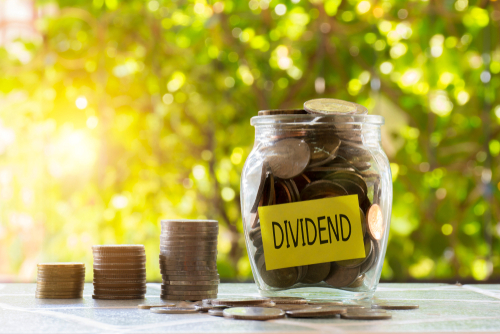When a company has a surplus of cash on their balance sheet, management and investors often want different things. Management would like to put that money back into the company. They could use the free cash for acquisitions, or to finance new initiatives. Investors, on the other hand, would like to see that money in their bank accounts in the form of a dividend.
Both management and investors have a good case for their right to the money. Management thinks they could expand the business and create more revenue. Investors think they deserve some sort of compensation for supporting the company. Without their initial investments, the company would not have gotten off the ground. It is a balancing act that many publicly traded companies encounter.
Microsoft (Nasdaq: MSFT) is good example. Despite generating huge profits and having tons of cash flow, the company didn’t begin paying a dividend until 2003. They paid shareholders $0.08 per share. Investors found this unacceptable from a company with more than $50 billion in cash. Microsoft heard shareholders’ complaints and responded. The next year Microsoft paid investors a special dividend of $3.00 per share while continuing the $0.08 quarterly dividend. The payout was worth $32 billion.
A dividend declaration is a vote of confidence by management. It affirms that there will be enough cash to pay the dividend and run the business but also states that it has set an expectation for a certain level of earnings and cash flow. Some bearish investors thought Microsoft’s massive special dividend was a sign the company has matured completely and sees limited growth for the future. Those investors were wrong. In reality, Microsoft’s special dividend signaled that the company created a business model capable of enormously sustainable earnings.
Signals to the Market
If a company is forced to cut their dividend — or, in the case of a company that has been raising the dividend year after year, forced to keep the dividend at the same level — it signals to investors that the company is stagnating. As a result, the stock will be hit hard. Management knows this, so they try to keep dividends steadily increasing. In other words, management commits to making future payouts. If it cannot meet that pledge, the share price will decline.
When companies report their quarterly earnings results, the language can sound like legalese. Companies don’t want to set expectations too high, because if they fail to meet those expectations, the stocks get punished. Management will often dilute the bad news with optimistic language too.
But a raised dividend says more than any CEO’s statement. A dividend raise says, “We have enough cash to pay shareholders a higher dividend, and we expect to generate more cash to continue to sustain a growing dividend.”
As economists Merton H. Miller and Franco Modigliani point out, when “a firm has adopted a policy of dividend stabilization with a long-established and generally appreciated ‘target payout ratio,’ investors are likely to (and have good reason to) interpret a change in the dividend rate as a change in management’s views of future profit prospects for the firm.” They were the first economists to suggest that dividend policy is an indication of executives’ beliefs on the prospects of their companies.
Dividends are a good way to gauge how a company expects to perform. You want to invest in growing companies. So, you want to invest in Dividend Aristocrats. Dividend Aristocrats are companies that have raised their dividend for a minimum of 25 consecutive years or more.
Beat the market with these top Dividend Aristocrats!
Good investing,
Robert
